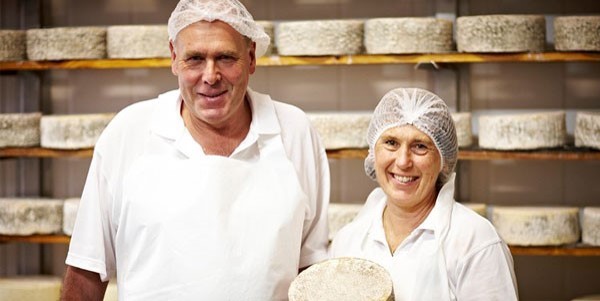Meet the Cheese Makers Melbourne Trusts: The Heritage of Floridia Cheese Thomastown
Meet the Cheese Makers Melbourne Trusts: The Heritage of Floridia Cheese Thomastown
Blog Article
Opening the Tricks of Artisanal Cheese Making: A Detailed DIY Guide
In the world of cooking workmanship, artisanal cheese making stands as a testament to the fragile equilibrium in between practice and innovation. As we embark on this trip to demystify the art of creating exquisite cheeses, we are faced with a tapestry of tricks and abilities waiting to be deciphered.
Selecting the Right Milk
When getting started on the journey of artisanal cheese production, the selection of milk plays an important role in establishing the top quality and attributes of the last item. The type of milk picked affects the taste, appearance, and generally account of the cheese.
In addition, the resource of the milk, whether from cows, goats, sheep, or buffalo, contributes distinctive flavors and qualities to the cheese. Each kind of milk brings its very own nuances, enabling for a broad variety of cheese selections to be crafted based on the selected milk.
Culturing and Coagulating
To initiate the cheese-making process, the vital actions of culturing and coagulating need to be thoroughly executed to change milk right into curds and whey. Culturing involves introducing valuable microorganisms to the milk, which after that starts the fermentation procedure. These germs convert lactose (milk sugar) into lactic acid, creating the acidic environment required for coagulation. The kind of culture utilized can substantially impact the flavor, appearance, and ripening of the last cheese item.

The timing and temperature control during culturing and coagulation are critical aspects that influence the last result of celebrity. Proper execution of these steps is vital to make certain the wanted appearance, flavor, and consistency of the artisanal cheese being produced.
Draining and Pressing Curds
After the milk proteins have coagulated and the curds have been cut to release whey, the next crucial action in artisanal cheese making involves draining pipes and pushing the curds to attain the preferred structure and uniformity of the final cheese item. Draining is the process of separating the curds from the whey. This can be done by moving the curds into a cheesecloth-lined colander or mold and allowing the whey to drain pipes off naturally. The time for draining pipes can differ depending on the sort of cheese being made and the here desired dampness material.
Once the curds have completely drained pipes, the following our website step is pushing. Pushing helps remove any kind of staying whey and compacts the curds to form a strong cheese wheel. Pushing can be done utilizing specialized cheese presses that apply constant and mild stress over an amount of time. The duration and stress applied during pushing will certainly affect the final appearance of celebrity, from soft and velvety to tough and company. Proper pushing and draining are vital steps that dramatically affect the quality and characteristics of the artisanal cheese being produced.
Aging and Flavor Methods
Carrying out thorough aging and flavor techniques is essential in improving the depth and intricacy of artisanal cheeses, elevating their taste profiles to charming degrees of refinement and sophistication. Aging plays a crucial function in developing the distinct tastes and structures that identify artisanal cheeses.
Seasoning strategies also add considerably to the last preference of artisanal cheeses. Cheesemakers may choose to introduce additional tastes by integrating ingredients such as natural herbs, flavors, or perhaps fruits right into the cheese throughout the manufacturing procedure. Furthermore, some cheeses are washed or scrubed with various fluids, such as brine or alcohol, to improve their flavors and structures.
Covering and Saving Cheeses

Conclusion
In final thought, mastering the art of artisanal cheese making involves very carefully choosing the best check milk, following specific culturing and coagulating processes, draining pipes and pushing curds efficiently, and using different aging and flavoring strategies. Keep in mind to cover and save your cheeses properly to ensure optimum taste and structure development.
Each type of milk brings its own subtleties, permitting for a large array of cheese selections to be crafted based on the picked milk.After the milk healthy proteins have actually coagulated and the curds have actually been reduced to launch whey, the following vital step in artisanal cheese making involves draining and pressing the curds to accomplish the wanted structure and uniformity of the last cheese item. Most cheeses should be wrapped in wax paper or cheese paper to enable them to take a breath while shielding them from drying out. For cheeses that require to proceed aging, such as bloomy skins or washed peels, guarantee they are kept in a great atmosphere like a cheese cavern or a refrigerator set to the suitable temperature level. By paying attention to the covering and storage space of artisanal cheeses, cheese makers and fanatics can protect the stability of these specials and fully appreciate their complex flavors.
Report this page